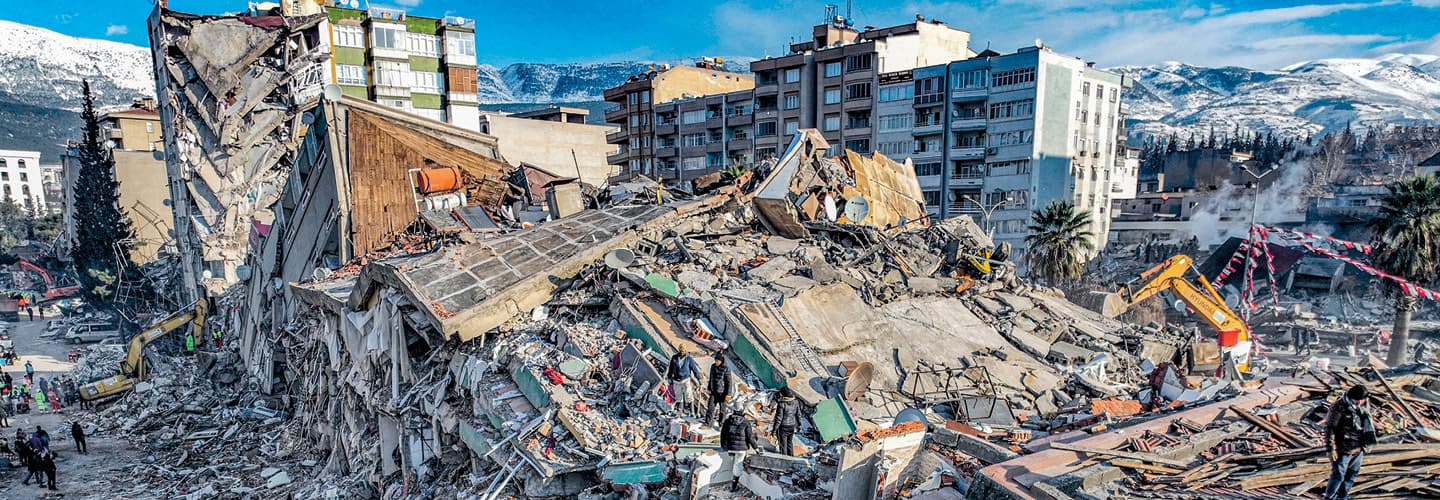After a catastrophic earthquake struck southern Türkiye (Turkey) and northwestern Syria, 17-year-old Yazam Mousa returned repeatedly to the collapsed four-story building where he used to live to dig through the rubble.
“At 5 a.m., after the earthquake, we pulled out everyone, people who were alive and people who were dead,” he says. “Those who died, may God rest their soul. And those who are injured, may God heal them.”
Yazam, who lives in Syria, was one of many survivors who sprang into action to help save their neighbors. The 7.8-magnitude earthquake struck on February 6, killing tens of thousands of people, injuring more than 100,000, and leaving millions in both countries homeless. The exact death toll—which stood at more than 50,000 on March 1—could take months to determine, aid agencies say, because of the extent of the damage and because Syria’s civil war prevented the kind of large-scale rescue operations that took place in Türkiye after the quake.
President Recep Tayyip Erdogan of Türkiye called the earthquake “the disaster of the century.”
On February 6, a violent earthquake struck southern Türkiye (Turkey) and northwestern Syria. The quake caused the four-story building where 17-year-old Yazam Mousa once lived to collapse. Yazam repeatedly returned to the building to dig through the rubble.
“At 5 a.m., after the earthquake, we pulled out everyone, people who were alive and people who were dead,” he says. “Those who died, may God rest their soul. And those who are injured, may God heal them.”
Yazam lives in Syria. He was one of many survivors who sprang into action to help save their neighbors. The 7.8-magnitude earthquake killed tens of thousands of people. More than 100,000 others were injured, and millions in both countries were left homeless.
On March 1, the death toll stood at more than 50,000. Aid agencies say that it could take months to determine the exact death toll because of the extent of the damage. Syria’s civil war has also made assessing the earthquake’s impact harder. That’s because the kind of large-scale rescue efforts that took place in Türkiye after the quake didn’t occur in Syria.
President Recep Tayyip Erdogan of Türkiye called the earthquake “the disaster of the century.”

